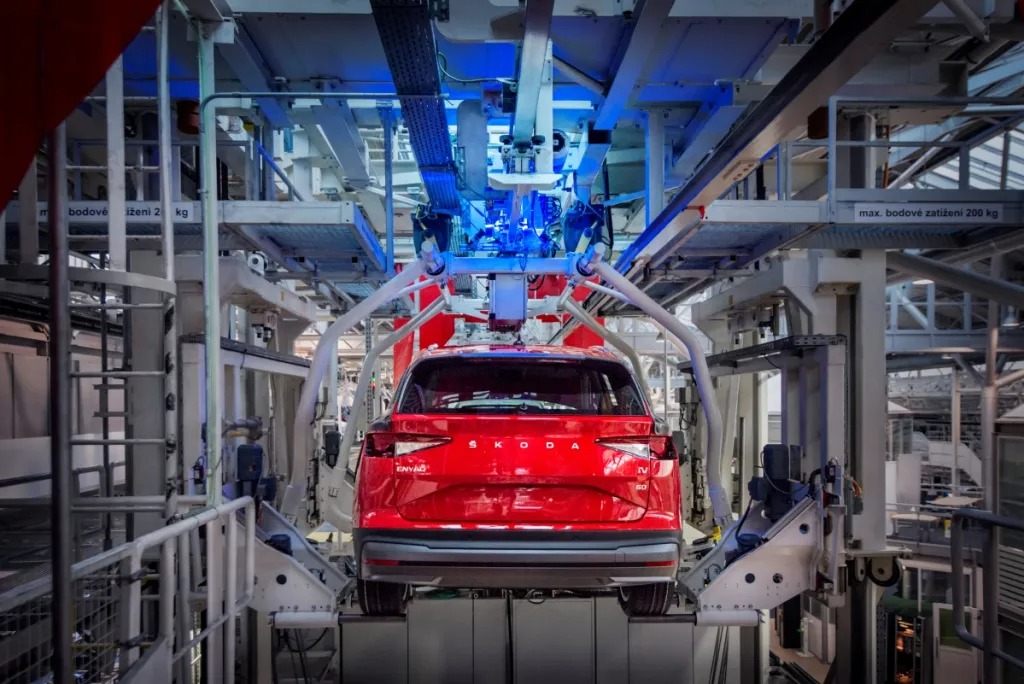In addition to quality, which is of course paramount for both the company and the customer, efficient use of capacities is a crucial aspect of production. Efficient use means minimising stoppages, which in turn means minimising the defects that cause stoppages. Defects can be prevented by enhanced preventive measures, but that’s expensive, or by more intensive maintenance when defects emerge, which is demanding in terms of personnel and their qualifications. “Making use of modern technologies, digitalisation and data collection to estimate when a given piece of equipment is on the verge of breaking  down, and repairing it before the defect or stoppage occurs, is the optimal form of maintenance,” explains Marek Jancák, head of car production at ŠKODA.
down, and repairing it before the defect or stoppage occurs, is the optimal form of maintenance,” explains Marek Jancák, head of car production at ŠKODA.
This approach is called predictive maintenance, and it is one of the pillars of ŠKODA’s maintenance strategy up to 2025. One of the first projects in this field is the deployment of predictive maintenance in Hall M13. Here, a solution called MAGIC EYE is used to monitor the condition of and detect faults in the mobile girders from which cars are suspended as they proceed down the line, and also to do the same for the so-called shins, which are essentially the power and data interface for the equipment on the line.
The system consists of the necessary hardware, which is installed on one of the frames that travel down the line with the car bodies, and of course some advanced software. Artificial intelligence is a key part of the software. Six cameras are mounted on the frame to monitor the condition of the various elements. A seventh camera is used to read the QR codes the system uses to determine where the scanning device is. The cameras are directly connected to a powerful computer on the frame, in which ten artificial neural networks perform parallel analysis of the collected photos.
Artificial Intelligence Learning
Before the MAGIC EYE system could be put into practice, the digital neural networks had to be taught to recognise defects. This required about three months of work and thousands of different photos. “We used photographs taken during the test run, but we also had to use an advanced mathematical modelling method to model some of the defects in a virtual environment,” says Libor Šída, who devised the trendsetting project in Hall M13. Modelling was necessary because some of the possible faults are very rare in practice and are so severe that learning them from real-life practice would be a complication for the line. “For example, a cracked beam is a fault that basically can’t occur in practice,” explains Šída.
Tags: 3d vina, hiệu chuẩn, hiệu chuẩn thiết bị, máy đo 2d, máy đo 3d, máy đo cmm, Smart Vision Technology Ensures Production Line Never Stops, sửa máy đo 2d, sửa máy đo 3d, sửa máy đo cmm

